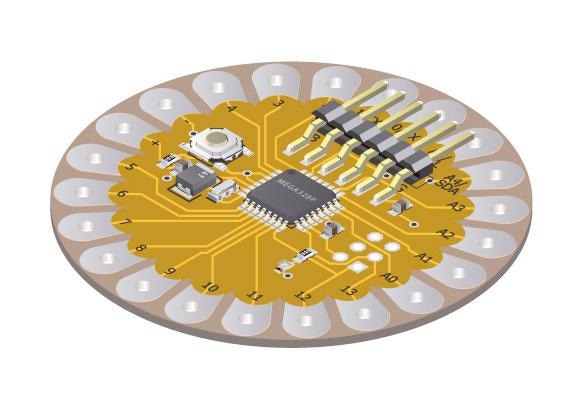A group of researchers recently published a paper in the journal ACS Materials Letters that demonstrated the feasibility of using liquid metal micromesh in wearable electronics to achieve long-term wearing comfort.

Study: Highly Permeable and Ultrastretchable Liquid Metal Micromesh for Skin-Attachable Electronics. Image Credit: raulpd/Shutterstock.com
Background
Stretchable electronic devices are considered a transformational technology for the next-generation wearable electronics as they possess the ability to operate in a stable manner under different mechanical movements such as stretching, twisting, and bending. These deformable types of electronic devices have gained considerable attention owing to their potential applications in human-machine interfaces.
In these applications, skin-attachable electrodes are often recognized as essential components to establish stable and conformal interfaces with the human body in order to induce electrical stimulations and obtain physiological signals.
Currently, stretchable electronic devices are built over elastomer films with limited moisture permeability. The human body constantly loses water from the skin to achieve thermoregulation. However, the elastomer substrates on which the electronic devices are attached can easily interrupt the process, which leads to discomfort when the devices are worn for a long-time.
The issue can be resolved using electronic textiles (e-textiles) featuring porous microstructures in place of elastomer substrates. These textiles can act as a suitable alternative to elastomers owing to their exceptional breathability.
Stretchable conductors typically act as enabling materials for e-textiles. Different conductive nanostructures were already assembled on individual textile fibers to preserve the porous microstructures of the textiles. Although conductive textiles display excellent conductivity under relaxed conditions, they often degrade under high tensile strains owing to delamination or fracture of the conductive network.
Liquid state conductors are suitable for creating compliant electrodes as they are inherently deformable compared to solid composites. Among the liquid state conductors, gallium−indium eutectic (EGaIn), a gallium-based liquid metal alloy, is specifically attractive owing to its excellent biocompatibility and high conductivity.
Although several methods, such as spray deposition and direct ink writing, are used to construct patterned liquid metal features for stretchable electronics, the metal features created by these methods often act as impenetrable barriers for liquids and gases.
In order to overcome the limitation, a two-step fabrication process can be followed that involves liquid metal deposition on textile and subsequent activation of the synthesized sample by very large tensile deformations.
The process transforms the liquid metal coating into a mesh-like morphology, which improves the overall permeability and wearing comfort. However, the porous liquid metal conductor is incompatible with the less stretchable textiles.
The Study
In this study, researchers synthesized a liquid metal micromesh over an electrospun microfiber textile as an ultrastretchable and highly permeable conductor.
Tetrahydrofuran (THF), xylene, N, N-dimethylformamide (DMF), sodium hydroxide (NaOH), hydrogenated styrene–ethylene–butylene–styrene elastomer (SEBS), an anisotropic conductive film, and EGaIn were used as the starting materials.
SEBS pellets were dissolved in a mixture containing THF, DMF, and xylene, and the resultant solution was filled into a 20 mL syringe with a 20 G stainless steel needle. The syringe was then placed on a computer-controlled dual-axis motorized linear translation stage. A high voltage of 12 kV was then applied to the needle at a distance of 18 cm from the aluminum foil collector. Eventually, the solution was fed by a syringe pump at 600 µl min-1 to create SEBS microfibers with a 10.0 ± 0.9 μm diameter. The microfibers were subsequently assembled into a large-area nonwoven textile due to the stage’s lateral reciprocating movement.
More from AZoM: What is Femtosecond Laser-Based 3D Printing?
A 100nm/10nm copper/chromium (Cu/Cr) layer was deposited on the SEBS microtextile through the thermal evaporation method. The metalized microtextile was then soaked in ethanol to remove the trapped air within it and submerged into an aqueous NaOH solution. Subsequently, the liquid metal was dropcasted and spread on the microfiber textile, and the resultant sample was subjected to high-speed rotation in a spin coater for 60 s to obtain a uniform liquid metal coating. Arbitrary patterns over the micromesh were created by selective laser ablation through subtractive manufacturing.
The wetting characteristics and resistance were quantified by a contact angle goniometer and a GW Instek GOM-805 milliohm meter, respectively. A Shimadzu AGS-X universal testing machine equipped with a 50 N loading cell was employed to evaluate the mechanical properties, while the water vapor permeability properties were assessed according to the ASTM E96-95 standard guidelines.
Researchers also fabricated skin-attachable electrodes and a multifunctional electronic patch and evaluated them.
Observations
Elastomeric microfiber textile and liquid metal micromesh were fabricated successfully. The porous morphology of the synthesized fiber facilitated high permeability compared to the standard textiles. The fiber also provided an irritation-free experience and comfort when attached to the skin for the long term.
The liquid metal micromesh displayed a low sheet resistance of 0.38 Ω/sq, electromechanical durability, and ultrahigh stretchability of higher than 1000% strain. Maskless and simple patterning was achieved by selective laser ablation.
A multifunctional electronic patch was successfully implemented, which displayed the real-world applicability of the micromesh. Moreover, the micromesh also demonstrated a stable and conformal interface with the skin, which leads to low contact impedance for electrical stimulations and electrophysiological recording.
To summarize, the findings of this study demonstrated the feasibility of liquid metal micromesh as a suitable conductor to construct breathable and stretchable forms of electronic devices that can seamlessly integrate with the human body.
Disclaimer: The views expressed here are those of the author expressed in their private capacity and do not necessarily represent the views of AZoM.com Limited T/A AZoNetwork the owner and operator of this website. This disclaimer forms part of the Terms and conditions of use of this website.
Source:
Zhang, J., Zhang, M., Wang, S. et al. Highly Permeable and Ultrastretchable Liquid Metal Micromesh for Skin-Attachable Electronics. ACS Materials Letters 2022. https://pubs.acs.org/doi/10.1021/acsmaterialslett.1c00763